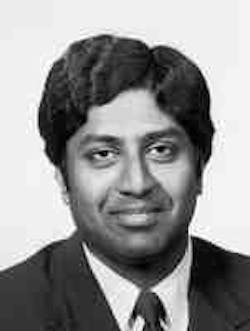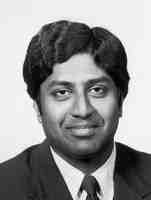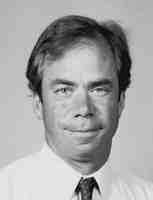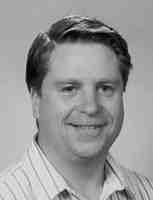Worldwide Catalyst Report Refiner details 'best practices' approach to catalyst selection
Ashok S. KrishnaCatalysts are critical to hydrocarbon processing in refineries. Refiners spend millions of dollars per year on catalysts. This cost, however, pales in comparison to the impact that catalysts can have.
Chevron Products Co.
El Segundo, Calif.John H. Arndt
Chevron Products Co.
Richmond, Calif.Chris W. Kuehler, Dave C. Kramer
Chevron Research & Technology Co.
Richmond, Calif.
The lost opportunity from not using the right catalyst, or an unscheduled shutdown caused by a catalyst-related problem, can be an order of magnitude higher than the cost of the catalyst itself. Recognizing this, as most oil companies do, Chevron Corp. pays a lot of attention to selection and use of refining catalysts.
Chevron Products Co. has adopted a "best practices" approach to addressing technical and operational issues in refining. A subset of the best-practices program includes the testing, selection, and monitoring of catalysts for Chevron's fluid catalytic cracking (FCC), catalytic reforming, and hydroprocessing units.
Refining best practices
About 4 years ago, Chevron's top refining management instituted the concept of best practice teams for each of the major refining processes. The aim of the best-practices program was to achieve better economies of scale in the company's large refining system (the largest in the U.S. at the time).
Each team comprises:
- The superintendent of the process area from each refinery (or his or her designee)
- A process coordinator or "master" for that process (this person works for the refining department and is located in one of Chevron's refineries)
- A technical specialist or advisor for that process.
These teams meet several times per year, share lessons learned, and work on improving their processes. They also oversee technical budgets and strategy, which include catalyst evaluation and testing. The refining process master is the "sponsor" for work in his or her area.
At every meeting, time is spent sharing lessons learned from recent operations and exchanging good ideas. In addition to operating issues, topics for discussion can include the good performance of a particular catalyst, or the availability of equilibrium FCC catalyst or off-site-regenerated hydroprocessing catalysts. The remaining time is devoted to the development of a good or "best" practice approach to improving one aspect of the team's process.
The teams use several criteria when brainstorming on areas requiring work. To be considered, a project must be:
- Non-capital-intensive
- Potentially beneficial to all team members
- Accomplishable in a matter of months.
Not surprisingly, all of the catalytic process teams selected catalyst-related topics in the first round of discussions. For example, the FCC team selected the broad topic of FCC catalyst management, including the evaluation, selection, addition, monitoring, and optimization of catalyst.
The catalytic reforming team developed best practices for catalyst sampling and catalyst regeneration. And the hydroprocessing team developed best practices for catalyst sulfiding and optimum catalyst selection.
The teams issue final documents that contain a consensus best practice approach to addressing a given topic. The document is widely distributed within the Chevron system.
Each refinery, through the participation of its representative team member, agrees to implement the best practice recommendations within a certain time frame. The process coordinator visits each refinery several times a year to help answer site-specific questions, share implementation problems and solutions, and audit progress.
The best practice approach has played an integral part in streamlining Chevron's catalyst evaluation process, and in strengthening ties between the technical and operating groups.
Fluid catalytic cracking
FCC catalyst selection requires a lot of attention for several reasons:
- The sheer number and variety of FCC catalysts available
- The ability to change catalyst on-stream
- The heat-balanced nature of the process
- The fact that the choice of catalyst can affect the very operability of the unit
- The big-dollar impact of the primary gasoline-making machine in a refinery.
Chevron has put significant effort into testing and evaluating FCC catalyst. The results are used in seven FCC units (FCCUs) in North America and, from time to time, in affiliates' units around the world.
There are many drivers for changing FCC catalysts and additives:
- Technology innovation
- Feed change
- Hardware improvement
- Constraint change
- Product value change
- Product quality requirements.
Chevron performs an annual review of catalyst alternatives for each FCCU. A change to the right catalyst can be worth $2-10 million annually, depending on the size of the unit and a number of other factors. In fact, in Chevron's larger FCCUs, a minimum threshold benefit of $2 million/year is necessary to change catalysts, as there is some risk associated with change, and the yield benefits may be uncertain.
Catalysts can create circulation problems or upset unit heat balance because of too much or too little coke make. In addition, catalysts that are too soft may not stay in the unit. A switch to a catalyst with one or more of these problems can easily overwhelm the positive economics associated with higher yields of desired products.
The price tag for Chevron's FCC catalyst evaluation program is relatively high. This is because the company relies on pilot-plant data; microactivity test (MAT) data are used only to screen catalysts.
The pilot-plant tests are conducted on a standard feed to develop comparative catalyst performance data. This information is then made available to Chevron's refinery engineers via the company's process model, and is used to review catalyst alternatives.
As a final step, feed-specific pilot-plant tests on a short list of catalysts generally are recommended prior to catalyst selection. Unfortunately, until recently this step required additional funding from the client organization (the refinery), and resulted in less-than-full utilization of the program by the refineries.
With the formation of the best-practice teams, this evaluation process has been streamlined. First, of course, the team had to be convinced that this effort was valuable. The team concept helped in this effort because one or two members who had enjoyed the benefits of a successful catalyst change could convince the others that the program can be very profitable if utilized properly.
Next, the budgeting process was modified to eliminate funding requests each time a refinery wished to pursue feed-specific catalyst testing. Finally, the team decreed that each refinery shall review their catalyst options at least once per year.
This does not imply that the plants would change catalysts every year (several of Chevron's large-inventory units take several months to turn over catalysts anyway), but simply that they should review their options. In this way, each refinery is ensured that it is using the best catalysts available in the marketplace for its current needs.
Also, to free up the refinery process engineers' time and to achieve consistency, it was agreed that the catalyst evaluation team would initiate and lead each study, although the refinery would still be responsible for the process.
The flow chart in Fig. 1 illustrates Chevron's best-practices program for selecting FCC catalyst.
Evaluation
Once it is decided that a full-blown catalyst evaluation is called for, the following methodology is employed:
- Refinery engineers and the catalyst evaluation team work together to define the goals and scope of the study. Product values are selected with the help of the planning department, thus ensuring that the values assigned to the various products match the desired yield shifts touted by the operating division.
- An agreed-upon base case is developed. This is very important, and the experienced refinery engineer needs to ensure that the most representative base case is selected. Sometimes, a minor adjustment to an earlier test run in the unit, using Chevron's process model, is adequate.
Data adjustments that are larger than the deltas associated with the catalyst change are not accepted. In such cases, a new test run (a reaction mix test) often is recommended. Unit limits also are clearly defined at this stage.
- The catalyst-evaluation team communicates with the vendors to make sure the vendors clearly understand the objectives of the study and the time frame for a catalyst change-out decision.
Now, the testing phase begins. MAT data are used only for activity screening and as a way of short-listing pilot-plant test candidates. Pilot-plant data on unit-specific feed and conditions are then translated into yield shifts which are entered into the process model.
The model is then used to thoroughly explore heat balance, optimization, plant limits, etc. At this point, the final, heat-balanced, optimized yield comparisons are sent to the refinery planning staff, who use their refinery-wide models to determine incentives for change.
Often, items that are specific to a given refinery play a role. For example, at one Chevron refinery, a catalyst change-out reduced gasoline sulfur such that the degree of hydrotreating required to meet regulations was minimized.
Chevron insists on the methodology described here because:
The reason that vendors' estimates can be unrealistic (with due respect to those organizations) is that vendors often do not fully understand how the incumbent catalyst performs with a specific feed in a particular unit.
Another benefit of the evaluation methodology is that it helps bring together the technical, operations, and planning staffs to truly understand what makes money on a particular unit.
Finally, after the catalyst change is completed, follow-up tests or plant data work-ups are done to assess the success of the change. This important step provides valuable feedback for the catalyst evaluation process so that further improvements and adjustments can be made.
Over the years, this methodology has been validated several times. Table 1 gives an example of a catalyst change performed a few years ago. To be fair, it is Chevron's most dramatic example of how different its numbers can be compared to the vendors' predictions.
Notice that Chevron's estimates and the vendor's estimates were dramatically different on yields of gasoline and alkylation-unit feed. Actual plant data comparison confirmed the directional shifts indicated by Chevron's method, although the split between light and heavy cycle oil was predicted inaccurately.
Most cases are not this dramatic; nevertheless, Chevron is more comfortable with its tried, tested, and consistent methodology.
Reforming
Screening units are used to evaluate semiregenerative (fixed-bed) reforming catalysts. These units are essentially small pilot plants that require only about a gram of catalyst. They are fully automated and run unattended at night.
Chevron uses two types of screening-unit tests: yield/activity tests and stability tests. The first is used mainly to evaluate on-stream samples.
All Chevron reforming reactors have on-stream catalyst samplers. Standard analytical tests (e.g., carbon, chlorides) can be done in the refinery. If more information is needed, the refinery process engineer and the reforming laboratory supervisor discuss the problem and decide what tests should be run.
If the problem appears serious, samples are sent by overnight mail to the reforming laboratory. Preparation and testing typically take 1-2 days. The results often are very convincing because the tests measure the catalyst's ability to perform reforming reactions with a known feed in a standard pilot plant.
Yield, activity
To test yield and activity, the screening unit is run on a standard feed at a standard set of conditions typical of commercial operation. The unit automatically monitors reformate octane and quickly increases reactor temperatures to achieve the target octane. Gas and liquid yields are automatically monitored for several hours following a temperature change.
If the catalyst is healthy, yields and octane should be stable. Catalyst activity is evaluated by plotting the lined-out temperature on the standard aging curve developed by Chevron for that catalyst.
These plots indicate the temperature normally required in the screening unit to achieve the target octane as a function of carbon loading. The effects of water upsets, catalyst overheating, chloride imbalance, and poor regenerations show up in this test. It is a great way to confirm or rule out catalyst problems when troubleshooting a plant.
Stability, regeneration
The second type of screening-unit test is a stability evaluation. In this test, the catalyst is put through its entire life cycle in less than 24 hr. This test normally is used to evaluate freshly regenerated catalyst, but it also can be used to test the stability of on-stream samples.
For this test, the screening unit is run at an extremely high octane and low hydrogen-recycle rate to cause accelerated fouling. A "tougher" naphtha feed also is used.
Again, the reformate octane is automatically monitored and reactor temperatures are adjusted to maintain target octane. But, for this test, the controllers must constantly increase temperatures and even anticipate changes somewhat, to keep the reformate on target.
The average ramping or fouling rate is the primary test result. Start-of-run temperature and average yield also can be determined from the results.
The results of this test are compared to known values for fresh catalysts. The results help process engineers anticipate how the reformer will behave and how long the run cycle will last. They give direct feedback to operations personnel about the quality of the regeneration.
The results also help quantify the impact of deviations from standard procedures, which inevitably happen during regeneration. They are particularly useful for identifying hydrocarbon "prereduction" which is difficult to spot visually during regeneration.
On a more positive note, innovations also can be evaluated: improvements in regeneration procedures that have come directly from the refineries can be spotted and confirmed in the laboratory tests.
CHA analysis
Cyclopropane hydrogenolysis analysis (CHA) is another test Chevron developed to evaluate the quality of regenerations. It is simpler, cheaper, and faster than the tests described previously, so most samples are tested in this way.
The test is run at conditions such that the conversion of cyclopropane to propane is almost entirely catalyzed by platinum. It measures platinum dispersion without some of the interferences seen with H2 or CO adsorption.
New catalyst testing
Although new catalysts are not as common in reforming as they are in FCC, several new ones have appeared in the market recently.
To kick off the evaluation process, the process advisor requests the evaluation; the reforming best-practices team and its sponsor approve it.
Screening-unit testing is done first using standard or special feeds. If the results are encouraging, a refinery may decide to try the catalyst commercially; perhaps only in one reactor. Others may insist that pilot testing be done, which is expensive but very accurate.
Again, the economic evaluation is left to the individual refinery.
Hydroprocessing
Chevron owns and operates a large number of hydrotreaters and hydrocrackers, and is a leading licenser of hydrocracking (for fuels and lubes) and resid hydrodesulfurization processes. Chevron uses its own hydrocracking catalysts and vendors' hydrotreating catalysts in its two-stage hydrocrackers.
Each hydrocracker is loaded with an "optimum" combination of catalysts tailored to meet specific processing requirements. This optimum load is determined using extensive pilot-plant tests as well as commercial feedback.
Catalysts are chosen for critical hydrotreaters in the refining system (FCC feed hydrotreaters, aromatic saturation units, etc.) using a combination of in-house pilot-plant tests and the pilot tests of qualified vendors. To qualify, vendors must demonstrate pilot-plant results that agree with in-house pilot data for the same feed using a base case catalyst.
Finally, for low-severity hydrotreaters (kerosine and naphtha units), Chevron relies on competent vendors for catalyst evaluation, properties, and compositions, and on its own commercial experience.
The Authors
Ashok S. Krishna is the process coordinator for fluid catalytic cracking (FCC) and alkylation at Chevron Products Co., El Segundo, Calif. He is responsible for coordinating technical and operating best practices for FCC and alkylation plants at Chevron refineries. Krishna has directed research and development and technical service efforts in FCC, resid FCC, coking, and reforming for Gulf Oil Co. and Chevron. He has MS and PhD degrees in chemical engineering from the University of Massachusetts, and an MBA from the University of Pittsburgh.
John H. Arndt is the hydroprocessing coordinator for Chevron Products Co. in Richmond, Calif. He is responsible for coordinating technical and operating principles in hydrocracking, hydrotreating, and hydrogen manufacture for the Chevron refineries. Since joining Chevron in 1963, Arndt has held a variety of technical and management positions involving process design, project design, plant support, process development, and process licensing. He has BS and MS degrees from California Institute of Technology.
Chris W. Kuehler is team leader for FCC and coking technology improvement at Chevron Research & Technology Co., Richmond, Calif. In his 22 years at Chevron, he has been instrumental in developing and implementing Chevron's FCC catalyst selection methodology. He has an extensive background in synthetic fuels. He has a PhD in chemical engineering from Princeton University.
Dave C. Kramer is a staff engineer with Chevron Research & Technology. For the last 4 years, he has served as the reforming process advisor for Chevron refineries. Kramer has been with Chevron for 16 years, and has worked assignments in process engineering, process planning, and process research. He has a BS in chemical engineering from Purdue University and holds 10 U.S. patents.
Copyright 1996 Oil & Gas Journal. All Rights Reserved.




